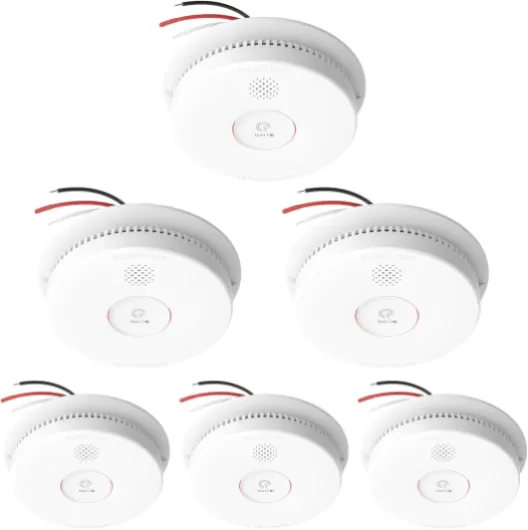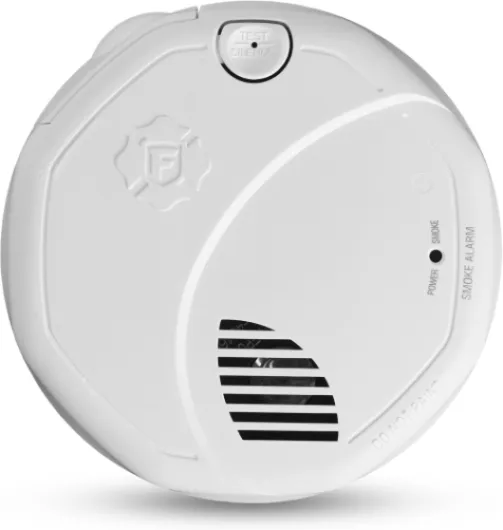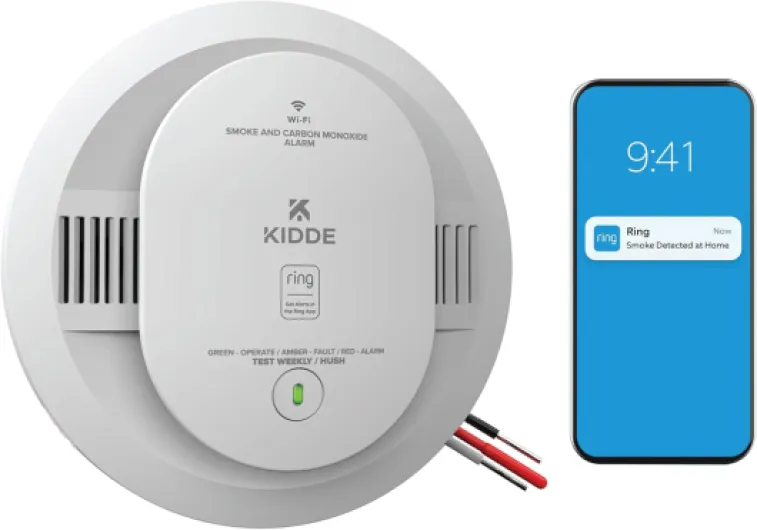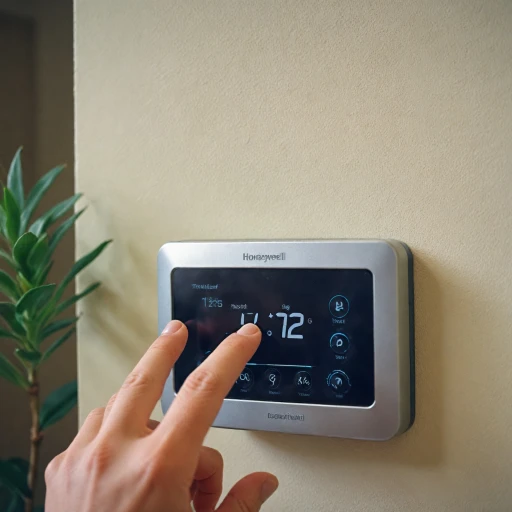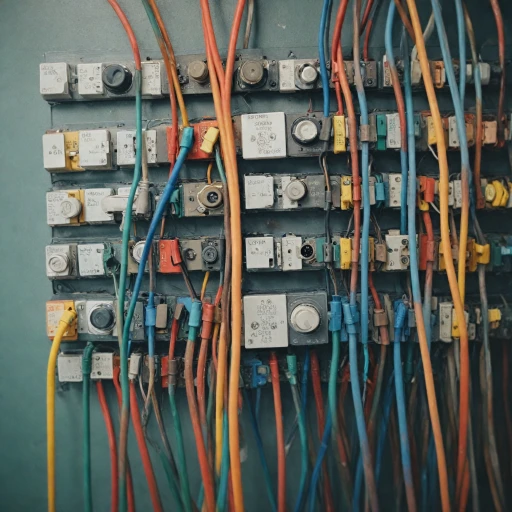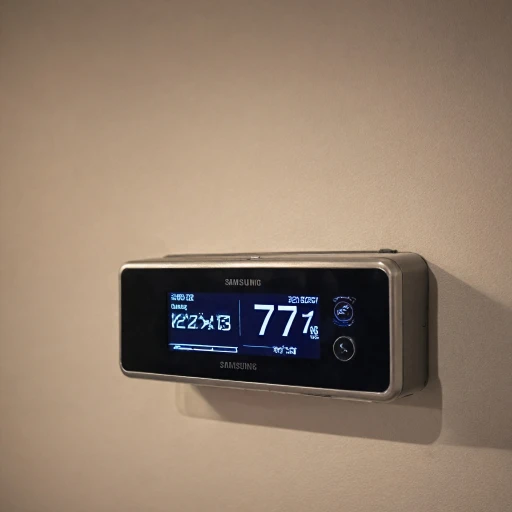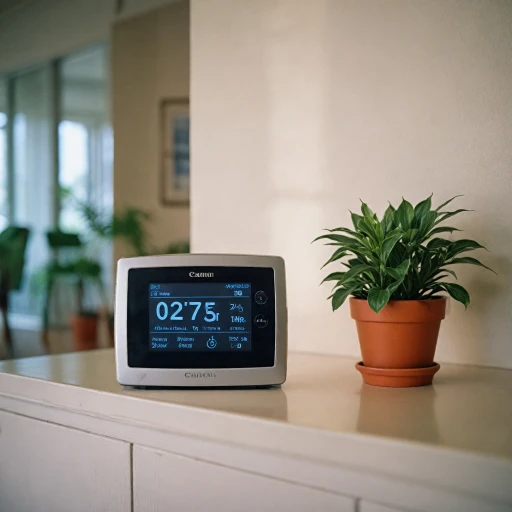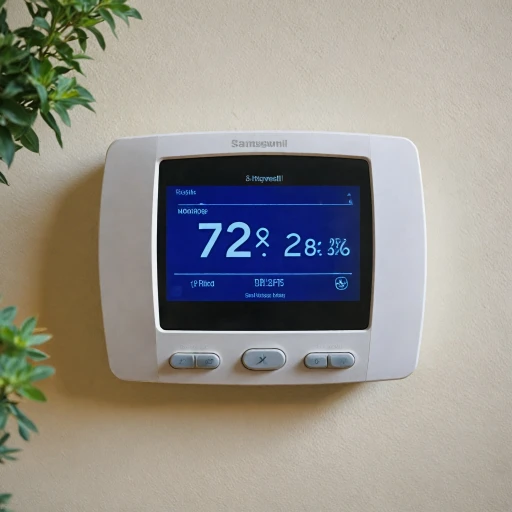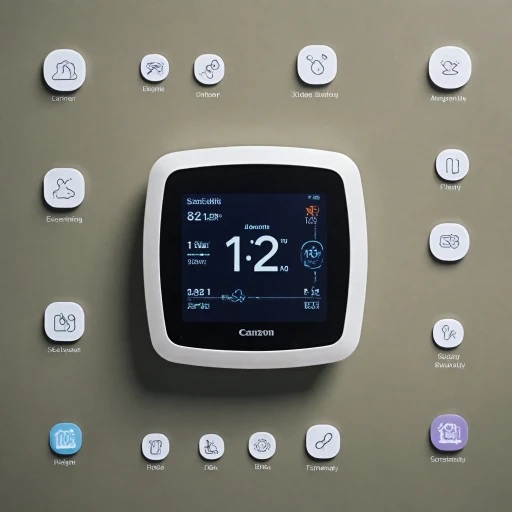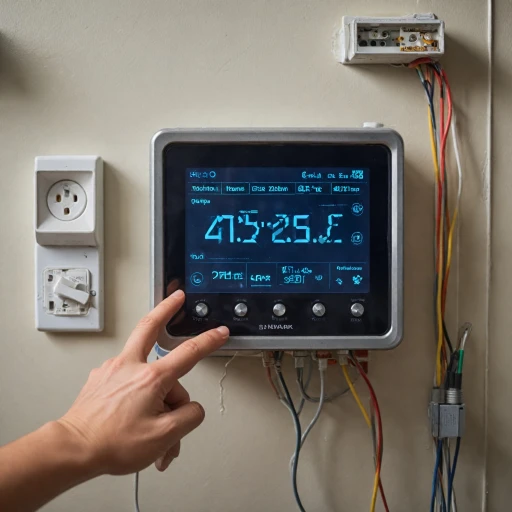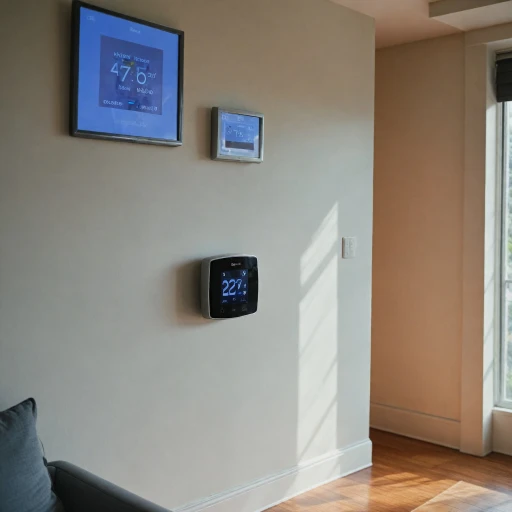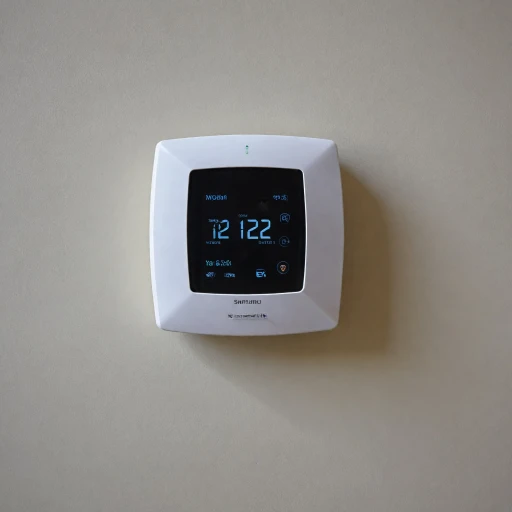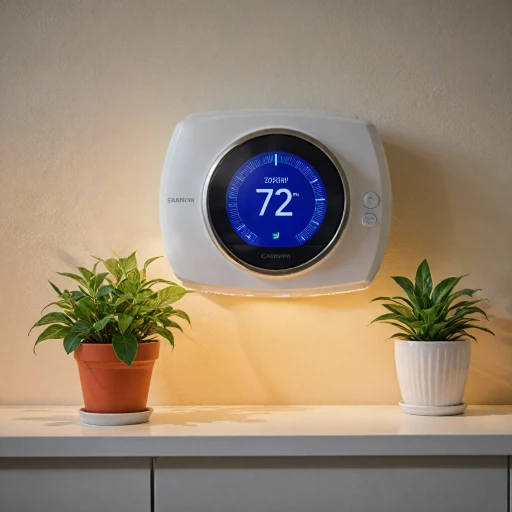
Understanding Smart Thermostats
The Basics of Smart Thermostats
Smart thermostats have become an integral part of modern homes, offering more than just control over temperature. These intelligent devices enhance overall energy efficiency, providing a way to monitor and adjust the heating and cooling systems remotely. By leveraging advanced technology, they allow homeowners to create a comfortable living environment while also saving on utility bills.
Features and Functionality
One of the standout features of smart thermostats is their ability to learn from user behavior and adjust accordingly. This means they can optimize heating and cooling patterns based on past usage, making the home more energy efficient. Additionally, they often come with features like voice control, easy install options, and compatibility with other smart devices, enhancing the home's security and convenience.
Smart Devices Connectivity
Many smart thermostats connect seamlessly with smart smoke detectors and alarm systems, creating a cohesive smart home ecosystem. For instance, integrating a smart thermostat with a smoke detector can offer synchronized responses, such as automatically shutting off HVAC systems when a smoke alarm is triggered. This integration ensures that emergencies like fires or carbon monoxide leaks are addressed promptly and effectively.
Popular Products and Reviews
- Wave smart technology plays a central role in these gadgets, with brands offering products that meet wave certification standards.
- Users often praise their ease of use, citing features like verified purchase reliability and the convenience of a battery-powered base station.
- Product reviews frequently highlight the long battery life and reliable connectivity of these smart devices.
Ensuring Security and Trust
The growing trend of smart thermostats also emphasizes security and trust. Reputable brands ensure their products have undergone rigorous testing and carry necessary certifications. These measures help to build consumer trust, ensuring that devices like smoke alarms and carbon monoxide detectors work seamlessly with smart thermostats to enhance home safety.
The Role of Z-Wave Technology in Home Automation
Exploring the Impact of Z-Wave Technology in Smart Home Systems
Z-Wave technology plays an instrumental role in enhancing the functionality of smart home systems, especially for devices like thermostats and smoke detectors. This wireless communication protocol allows for seamless integration of various smart devices, providing a more cohesive and efficient home automation experience. Z-Wave operates on a low-energy radio frequency, making it an energy-efficient choice for connecting multiple devices, from a Z-Wave smoke detector to a smart thermostat. This ensures that your home remains secure without placing a significant strain on your power resources.- Reliability and Range: Z-Wave products are designed to function within a robust, mesh network. This strengthens the connection between devices like smoke alarms, carbon monoxide detectors, and smart thermostats, even over long distances.
- Security Features: By integrating Z-Wave-certified alarm systems with your smart thermostat, such as a wave smoke or a monoxide detector, you enhance your home's safety. These devices ensure you receive timely alerts if smoke or carbon monoxide is detected.
- User Accessibility: The connectivity offered by Z-Wave technology enhances user experiences with easy install features and verified product reviews. Customers have praised brands for providing base station security and smart smoke alarms that integrate well with their home systems.
Incorporating Z-Wave technology not only strengthens the security of your home but also ensures that all connected devices operate smoothly. As smart home technology continues to evolve, Z-Wave will remain a cornerstone in achieving a fully integrated and secure home environment.
Integrating Z-Wave Smoke Detectors with Smart Thermostats
Seamless Integration of Z-Wave Smoke Detectors
Integrating Z-Wave smoke detectors with smart thermostats can significantly enhance the security of your home. As the smart home ecosystem continues to evolve, seamless communication between devices is vital. Let's explore how Z-Wave technology facilitates this communication, particularly when it comes to smoke detectors. Smart thermostats equipped with Z-Wave technology offer a more cohesive home automation strategy. These devices ensure that in the event of a fire or carbon monoxide detection, alerts are sent promptly to homeowners via their smartphones. This timely alert reduces potential damage and enhances safety. When discussing smoke detectors integration, it's imperative to highlight a few key features:- Connectivity: Z-Wave smoke detectors can communicate with various smart devices, including thermostats, effectively creating a comprehensive alert system.
- Alerts and Notifications: Notifications from integrated devices ensure that homeowners receive instantaneous updates on potential dangers such as smoke, carbon monoxide, or fire alerts, all facilitated through smart technology.
- Battery-Powered Support: Many smart smoke alarms are battery powered, ensuring functionality even during power outages. Regular alerts for battery status further ensure devices operate optimally.
- Centralized Control: With a Z-Wave enabled base station, managing and monitoring alarms becomes easier and more centralized, thereby enhancing user control over their home security.
- Device Compatibility: Many wave smart smoke alarms are designed for easy install, providing versatile compatibility across various brands, adding an extra layer of assurance that your alarm works perfectly with different home automation products.
Benefits of a Connected Home System
Advantages of a Connected Home Ecosystem
A connected home system offers numerous advantages that enhance daily living convenience, safety, and energy efficiency. By integrating various smart devices, including smart thermostats and Z-Wave smoke detectors, homeowners can create a seamless, interconnected environment. Let's delve into some of the key benefits:- Increased Security: With smart smoke alarms and carbon monoxide detectors in place, you receive real-time alerts even when you are away from home. This enhanced security measure, triggered by products like wave smoke detectors, ensures that any potential threat is promptly communicated, thus safeguarding your home and loved ones.
- Energy Efficiency: By combining smart thermostats with other Z-Wave certified devices such as lighting and energy monitors, homeowners can optimize energy usage. The ability to control and schedule devices remotely leads to potential cost savings on utility bills.
- Convenience: A connected home system allows you to monitor and control different appliances from a single app. Managing your home’s climate, security, and appliances becomes effortless, with features like automation settings enhancing user experiences.
- Custom Alerts: Smart devices provide tailored alerts specific to your needs. For instance, a wave smart security system will notify you via your phone or base station when it detects smoke or carbon monoxide, providing peace of mind whether you are home or away.
- Device Compatibility: Most smart home products, such as the ring alarm systems, are designed with compatibility in mind. This means different brands and devices can often communicate with each other, making integration smoother for users seeking a cohesive smart home environment.
- Easy Installation: Most contemporary smart devices, like battery-powered smoke detectors and smart thermostats, feature an easy installation process. Verified purchase reviews frequently highlight user-friendly interfaces and straightforward setups, reducing the entry barrier for non-technical users.
Challenges and Considerations
Addressing the Complexities of a Unified Smart Home Network
The advent of connected home systems, including smart thermostats and Z-Wave smoke detectors, promises enhanced security and convenience. However, several challenges and considerations must be addressed to create a cohesive and efficient smart home network. Firstly, compatibility between various devices is crucial. It's important to ensure that your smart products, like a Z-Wave smoke detector or a smart thermostat, communicate seamlessly with each other. Product reviews often highlight compatibility issues, so it's advisable to choose devices with verified certifications. Battery Management Battery life and management are other significant considerations. Many devices, including smoke alarms and smart thermostats, are battery powered. Regular maintenance to ensure batteries are replaced and functioning optimally is essential for security and functionality. A low battery can compromise the effectiveness of your monoxide detector or smoke alarm. Ensuring Reliable Alerts An effective connected home system should provide reliable alerts. Devices like smart smoke alarms need to effectively alert the homeowner in the case of smoke or monoxide alarms. It's important to choose a brand with high-rated reviews to ensure the alarm works when you need it most. Moreover, with the numerous brands and products available, it's vital to look for easy installation features and robust customer support. Ultimately, while a connected home system offers many benefits such as enhanced security and convenience, integrating these technologies requires careful thought and planning to overcome inherent challenges.Future Trends in Smart Home Technology
Emerging Innovations in Smart Home Technology
The landscape of smart home technology is rapidly evolving, with new innovations continually enhancing the capabilities of devices like smart thermostats and Z-Wave smoke detectors. As we look to the future, several trends are set to redefine how these devices integrate and function within our homes.
Increased Interconnectivity and Integration
One of the most significant trends is the push towards greater interconnectivity among smart devices. Products with Z-Wave certification are leading the charge, offering seamless integration with other smart home devices. This means your smart thermostat can work in tandem with a Z-Wave smoke detector to provide comprehensive home security and energy management. The ability to connect multiple devices ensures that alerts, such as smoke or carbon monoxide alarms, are communicated across the network, enhancing safety and response times.
Advancements in AI and Machine Learning
Artificial intelligence and machine learning are becoming integral to smart home systems. These technologies enable devices to learn from user behavior, optimizing performance and efficiency. For instance, a smart thermostat could adjust heating and cooling patterns based on historical data, while a smart smoke alarm could differentiate between false alarms and genuine threats, reducing unnecessary alerts.
Focus on Sustainability and Energy Efficiency
As environmental concerns grow, there is a strong emphasis on sustainability in smart home products. Battery-powered devices are becoming more efficient, with longer lifespans and reduced environmental impact. Smart thermostats are designed to minimize energy consumption, contributing to lower utility bills and a smaller carbon footprint. This trend is likely to continue as manufacturers strive to meet consumer demand for eco-friendly products.
Enhanced User Experience and Accessibility
Manufacturers are focusing on making smart home technology more user-friendly and accessible. Easy installation processes and intuitive interfaces are becoming standard, ensuring that even those with limited technical expertise can benefit from smart home devices. Verified product reviews often highlight the ease of use and reliability of these systems, which is crucial for widespread adoption.
Security and Privacy Concerns
As smart home technology becomes more prevalent, security and privacy remain top priorities. Brands are investing in robust security measures to protect user data and prevent unauthorized access. Verified purchase reviews frequently emphasize the importance of security features, such as encryption and secure cloud storage, in maintaining user trust.
In conclusion, the future of smart home technology promises exciting advancements that will enhance the functionality and security of devices like smart thermostats and Z-Wave smoke detectors. By staying informed about these trends, consumers can make educated decisions about the products that best meet their needs.

